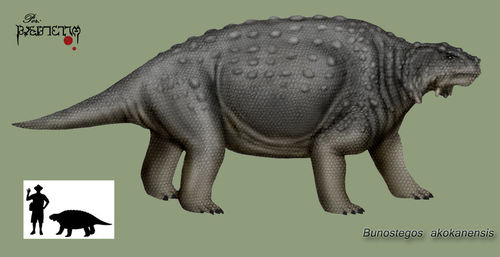-
Tips for becoming a good boxer - November 6, 2020
-
7 expert tips for making your hens night a memorable one - November 6, 2020
-
5 reasons to host your Christmas party on a cruise boat - November 6, 2020
-
What to do when you’re charged with a crime - November 6, 2020
-
Should you get one or multiple dogs? Here’s all you need to know - November 3, 2020
-
A Guide: How to Build Your Very Own Magic Mirror - February 14, 2019
-
Our Top Inspirational Baseball Stars - November 24, 2018
-
Five Tech Tools That Will Help You Turn Your Blog into a Business - November 24, 2018
-
How to Indulge on Vacation without Expanding Your Waist - November 9, 2018
-
5 Strategies for Businesses to Appeal to Today’s Increasingly Mobile-Crazed Customers - November 9, 2018
260m-yr-old pre-reptile may have been first to walk upright
Bunostegos akokanensis, a 260-million-year-old pre-reptile may have been the first creature to walk upright on all fours, like a cow or a hippo, new research suggests. Until now, though, researchers thought all the known pareiasaurs during that time were sprawlers whose limbs would just out from the side of the body-like some modern lizards.
Advertisement
“We don’t see upright posture, with the legs underneath the body, in both the forelimb and the hind-limb in a single animal until much later, in mammals and in dinosaurs,”said Mogran Turner, lead researcher of the study from Brown University in Rhode Island”.
Furthermore, National Museums of Scotland vertebrate paleontologist Dr. Nick Fraser comments, “Here’s this big, cow-sized animal in this very arid region”. The Permian was much drier than previous geological eras due to rainforest collapse, and the supercontinent of Pangea, Bunostegos’ home, would have been dominated by extremes in temperature fluctuation. The latter is a common trait among non-sprawlers, Turner said.”Many other sprawling 4-legged animals have the reverse ratio”, she explained.Bunostegos also lived in a tough habitat somewhat apart from other pareiasaurs, she added, and the upright posture may have had something to do with this.
In this study, the researchers looked at fossilized bones of the Bunostegos akokanensis including the shoulder, elbow, humerus, and the ulna.
The animal, which was roughly the size of a cow, likely walked long distances across the Sahara in search of food. In a “sprawler”, the humerus would jut out sideways. And its elbow joint works like a hinge, enabling a back and forth movement similar to the motion encouraged by the human knee.
First of all, its shoulder joint is facing down in a way that the humerus, the bone that goes from the shoulder to the elbow, would go straight down underneath, restricting the humerus from sticking out to the side. Scientists suggest the creature may have evolved its upright posture to accommodate long journeys. “All the four-legged land animals that lived at the time have been shown to be sprawlers, with the legs coming out of the side of the body”, she said.
“Posture, from sprawling to upright, is not black or white, but instead is a gradient of forms”, Turner said. There are many complexities about the evolution of posture and locomotion many scientists are working to better understand every day.
Advertisement
“The structure of Bunostegos is sudden, lightning, and states we have much…”




























